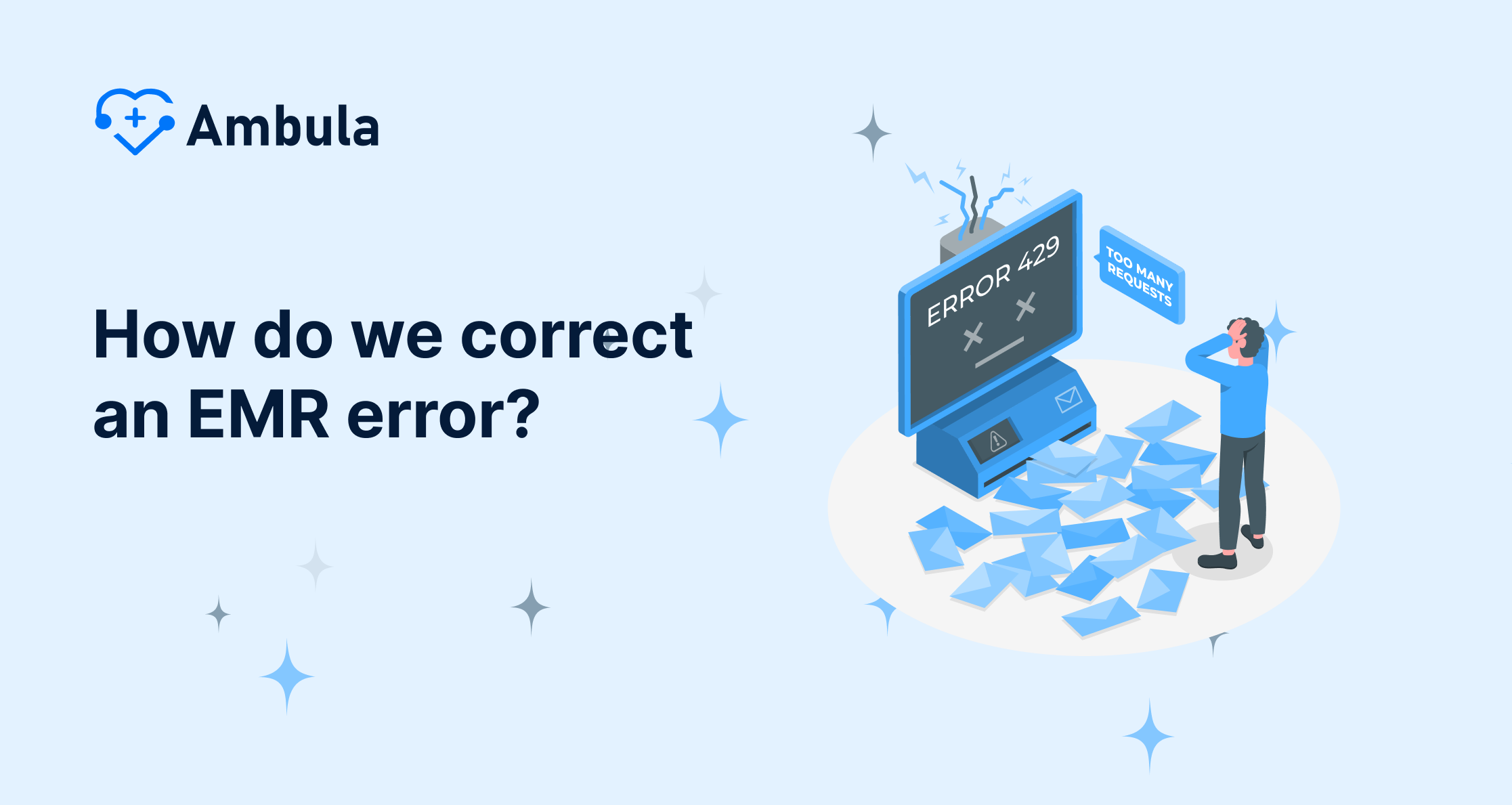
Topics:
- EMR promotion
- HITECH Act
- the benefits of EMRs.
Are doctor’s offices required to have EMRs?
By law, are doctors’ offices required to have emr? According to the Electronic Medical Records mandate, healthcare practices should shift from paper records to EMR because there is a big different between paper vs EMR. Moreover, the condition appears in the American Recovery and Reinvestment Act (ARRA).
The latter purpose is to fund healthcare professionals and incentivize EMR usage. In fact, it is true that not all physicians use EMR, but since 2012, an increase of 50% has happened. Consequently, this augmentation boosted the number of updated health organizations worldwide in the patient care. Besides, it increased the security of patient data and care coordination.
Regulatory Requirements for EMR Adoption
EMR promotion happens everywhere you go. Both private and public financial incentives encourage doctors to go with EMRs. The government also invested billions into training workers in the sector of health data technology. Moreover, it established centers for a regional extension to give technical advice and others. However, some obstacles stand in between the initiative and its goals. Namely, the time required to shift to the digital realm.
Let’s remember that using EMRs makes doctors’ practices more inefficient. Also, they improve patient care quality by providing medical history to any doctor.
Unfortunately, a lot of physicians still prefer paperwork. Nevertheless, the future promises the implementation of EMRs in all medical practices. Initially, the Health Information Technology for Economic and Clinical Health Act (HITECH Act), approved in 2009, prompted healthcare systems to adopt EMR. The HITECH Act incorporates incentives to buy only certified EMR systems. The HITECH Act also generates privacy regulations and standards. Furthermore, it allows Medicare and Medicaid to pay physicians and hospitals who prove “meaningful use” of EMRs.
In addition to the HITECH Act and the Medicare and Medicaid EHR Incentive Programs, several other healthcare regulations and initiatives encourage or mandate EMR adoption by doctors’ offices. These include:
- The Meaningful Use program
- The Medicare and Medicaid Quality Payment Program
- The Improving Medicare Post-Acute Care Transformation Act
- The Patient Protection and Affordable Care Act
These regulations and initiatives have helped to accelerate the adoption of EMRs in doctors’ offices. As of 2018, 96% of non-federal physicians had adopted certified EHRs.
Check out these articles after you’re done
HITECH Act
The HITECH Act is one of the initiatives that belong to the economic stimulus package. Does this mean that doctors’ offices are required to have emr asc is the answer? Not yet.
Basically, the Obama administration introduced this act through the American Recovery and Reinvestment act (ARRA). Properly, the signature of the act occurred by the President himself in 2009 by law. The purpose of the HITECH Act is promoting and expanding the adoption of health data technology. Most importantly, before the act, only 10% of hospitals had digital systems.
Thus, the workflows now are more efficient and less costly. Confidentiality and privacy became a priority. Originally, the law came to life to avoid hesitation as to whether practices should transfer to digital. Resulting in a wide shift towards EMRs. Ultimately, it is always useful to remember the benefits of EMRs.
For customers:
- Fewer errors when compared to paperwork
- Quicker and better care
- Track data and results in time
- Boost diagnosis and treatments
- Selecting patients requiring preventive care and screenings
- Advanced patient health information privacy and security
- Make better decisions based on data
- Get follow-up support
- Access for patients to their records while the following lifestyle recommended changes and viewing prescriptions
Other benefits pertain to practices and they include:
For practices:
- Less space
- Better workflows
- Reduction of operational costs
- Ability to communicate with different medical facilities
- Scalability
- Enabling outreach
- Reminders
- Documentation
- Research support
- Checking clashing treatments
- Staff communication
- Avoiding duplicate testing
- Connection to other health data
Exceptions to EMR Requirements
While the adoption of electronic medical records (EMRs) has been widely encouraged and incentivized, certain types of doctors’ offices may be eligible for exceptions or exemptions from EMR requirements. These exceptions are primarily designed to address the challenges faced by small practices and those in rural areas.
Exceptions for Small Practices
Small practices, defined as those with few physicians, may face financial and logistical hurdles in implementing EMRs. The initial costs of purchasing and installing EMR systems, as well as the ongoing costs of training staff and maintaining the technology, can be significant for small practices. Additionally, the time required to transition from paper-based records to EMRs can disrupt patient flow and workflow.
To address these challenges, some healthcare regulations and incentive programs provide exemptions or reduced requirements for small practices. For instance, the Medicare and Medicaid EHR Incentive Programs offer a “meaningful use” exception for small practices. This exception allows small practices to meet the program’s requirements by demonstrating meaningful use of a certified EHR system without having to meet all of the specific measures and criteria.
Exceptions for Rural Practices
Rural practices located in areas with limited access to broadband internet and other technology infrastructure face unique challenges in adopting EMRs. The lack of reliable internet connectivity can make installing, maintaining, and using EMR systems effectively difficult. Additionally, the high cost of implementing and maintaining EMRs can financially burden rural practices, which often operate with limited resources.
To address these challenges, some healthcare regulations provide exemptions or reduced requirements for rural practices. For example, the Health Information Technology for Economic and Clinical Health (HITECH) Act allows rural providers to qualify for a “hardship exemption” from certain EMR requirements. This exemption is granted to providers who demonstrate that they face significant challenges in implementing and using EMRs due to geographic or technological limitations.
Current EMR Adoption Rates Explained
While mandatory EMR use isn’t directly enforced, its encouragement through the HITECH Act’s “meaningful use” program has significantly impacted adoption rates. As of 2021:
- Nearly 9 in 10 (88%) of office-based physicians adopted any EHR system.
- Nearly 4 in 5 (78%) had adopted a certified EHR.
This represents a substantial increase since 2008, when only 42% of physicians used any EHR. The trend shows consistent growth, highlighting the effectiveness of incentives and the perceived benefits of EMRs. However, adoption isn’t uniform across practices:
- Larger hospitals and those affiliated with systems have higher adoption rates than smaller and independent facilities.
- Teaching hospitals tend to adopt sooner than non-teaching ones.
While progress is undeniable, further discussions remain around expanding or changing exemptions for small practices, rural areas, and financially challenged ones.
Remember, these are just key points. You can elaborate further by including specific data, comparisons across different countries, or potential reasons for varying adoption rates based on your article’s focus.
The Impact of EMR on Doctors’ Workflows
Electronic medical records (EMRs) have significantly impacted doctors’ daily workflows. While EMRs offer many potential benefits, such as improved patient care and increased efficiency, they also pose some challenges, such as increased administrative burden and decreased face-to-face patient interaction.
Impact on Daily Workflows
One of the most significant impacts of EMRs on doctors’ workflows is the increased amount of time spent on documentation. In the past, doctors would typically record patient notes by hand or dictate them to a transcriptionist. With EMRs, doctors are now responsible for entering all patient information directly into the computer. This can be a time-consuming process, and it can often lead to doctors spending less time with patients face-to-face.
EMRs have also changed the way that doctors communicate with other healthcare providers. In the past, doctors would typically communicate with each other by phone or fax. With EMRs, doctors can now communicate electronically, saving time and improving care coordination. However, this can also lead to an increase in the number of messages that doctors receive, which can be overwhelming and can make it difficult for them to focus on patient care.
Challenges of EMR Adoption
In addition to the increased administrative burden, EMR adoption can also lead to a number of other challenges, such as:
- Increased risk of burnout: Doctors who spend a lot of time using EMRs may be at an increased risk of burnout.
- Decreased patient satisfaction: Patients may be less satisfied with their care if they feel that their doctors are not spending enough time with them face-to-face.
- Increased risk of errors: Doctors may be more likely to make errors when they are trying to enter data into EMRs quickly.
- Difficulty integrating with other systems: EMRs may not always integrate well with other healthcare systems, such as laboratory or radiology systems.
- Lack of training and support: Doctors may not receive adequate training and support in using EMRs.
Are EMRs mandatory in ASCs?
After the mandate, Are EMRs mandatory in ASCs? ASCs or ambulatory surgery centers don’t have to implement EMRs. Explicatively, there is no law for ASCs to abide by the same requirements as hospitals and practices.
Truth is, many ASCs have computer-based system,s but less than 10%have implemented EMRs. Separately, EMRs have a clinical database, real-time processing ca[ability, a list of medical terms, etc. On the other hand, computer-based systems lack these. This doesn’t mean ASCs should still refrain from EMR implementation. Here’s a gentle reminder of why:
- ASC-based EMR uniqueness: these are not highly comprehensive since the operations conducted inside are limited.
- Lack of funding: there is no official funding for EMRs within ASCs.
- Complete EMR systems are scarce in ASCs: lack of incentive results in many ASCs not adopting EMRs.
- Better interoperability in the future: absence of integration of the sent documents from EMR to another within the receiving system. However, it happens because of the usage of common data sets and some other different features.
The EMR mandate, formally known as the Meaningful Use program, had a significant impact on healthcare IT adoption in the US. While the program itself ended in 2018, its effects are still felt today. Here are some key stats to consider:
- Nearly all non-federal acute care hospitals (96%) adopted a certified EHR by 2021. This is a huge jump from 2011, when only 28% had adopted one.
- Nearly 4 in 5 office-based physicians (78%) will adopt a certified EHR by 2021. This also represents significant progress from 2011, when only 34% had adopted one. (Source: HealthIT.gov)
For closure, and after we answered your question, Are doctors’ offices required to have emr? And introduced you to the legal incentive that is spreading EMRs more and more. You probably concluded that EMR is important to your patients and practice. In case you are looking for a customized solution, we, at Ambula can help you. Of course, We advise you to choose the better system wisely by asking the right questions. Compose a list of potential vendors, evaluate, check your references and pave the way for better-quality care.
For further inquiries, our Ambula healthcare staff is waiting to hear from you, contact us: (818) 308-4108. And now check out How real-time data can improve patient care!







